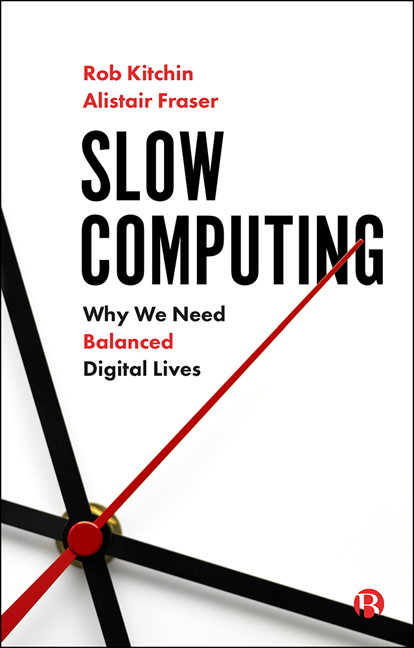Refine search
Actions for selected content:
48581 results in Computer Science
Variational assimilation of web camera-derived estimates of visibility for Alaska aviation
-
- Journal:
- Experimental Results / Volume 2 / 2021
- Published online by Cambridge University Press:
- 15 March 2021, e14
-
- Article
-
- You have access
- Open access
- HTML
- Export citation

Slow Computing
- Why We Need Balanced Digital Lives
-
- Published by:
- Bristol University Press
- Published online:
- 12 March 2021
- Print publication:
- 24 September 2020
Exploiting Database Management Systems and Treewidth for Counting
-
- Journal:
- Theory and Practice of Logic Programming / Volume 22 / Issue 1 / January 2022
- Published online by Cambridge University Press:
- 12 March 2021, pp. 128-157
-
- Article
- Export citation
4 - Cooperative Caching in Cloud-Assisted 5G Wireless Networks
- from Part I - Optimal Cache Placement and Delivery
-
- Book:
- Wireless Edge Caching
- Published online:
- 19 October 2020
- Print publication:
- 11 March 2021, pp 66-88
-
- Chapter
- Export citation
13 - Full-Duplex Radios for Edge Caching
- from Part III - Cache-Aided Interference and Physical Layer Management
-
- Book:
- Wireless Edge Caching
- Published online:
- 19 October 2020
- Print publication:
- 11 March 2021, pp 257-278
-
- Chapter
- Export citation
18 - Mobile VR Edge Delivery: Computing, Caching, and Communication Trade-Offs
- from Part IV - Energy-Efficiency, Security, Economic, and Deployment
-
- Book:
- Wireless Edge Caching
- Published online:
- 19 October 2020
- Print publication:
- 11 March 2021, pp 368-386
-
- Chapter
- Export citation
List of Contributors
-
- Book:
- Wireless Edge Caching
- Published online:
- 19 October 2020
- Print publication:
- 11 March 2021, pp xiv-xviii
-
- Chapter
- Export citation
19 - Economic Ecosystems in Elastic Wireless Edge Caching
- from Part IV - Energy-Efficiency, Security, Economic, and Deployment
-
- Book:
- Wireless Edge Caching
- Published online:
- 19 October 2020
- Print publication:
- 11 March 2021, pp 387-407
-
- Chapter
- Export citation
2 - Coded Caching for Heterogeneous Wireless Networks
- from Part I - Optimal Cache Placement and Delivery
-
- Book:
- Wireless Edge Caching
- Published online:
- 19 October 2020
- Print publication:
- 11 March 2021, pp 7-36
-
- Chapter
- Export citation
8 - Wireless Edge Caching for Mobile Social Networks
- from Part II - Proactive Caching
-
- Book:
- Wireless Edge Caching
- Published online:
- 19 October 2020
- Print publication:
- 11 March 2021, pp 146-172
-
- Chapter
- Export citation
9 - A Proactive and Big DataEnabled Caching Analysis Perspective
- from Part II - Proactive Caching
-
- Book:
- Wireless Edge Caching
- Published online:
- 19 October 2020
- Print publication:
- 11 March 2021, pp 173-192
-
- Chapter
- Export citation
1 - Introduction
-
- Book:
- Wireless Edge Caching
- Published online:
- 19 October 2020
- Print publication:
- 11 March 2021, pp 1-4
-
- Chapter
- Export citation
Index
-
- Book:
- Wireless Edge Caching
- Published online:
- 19 October 2020
- Print publication:
- 11 March 2021, pp 408-410
-
- Chapter
- Export citation
Preface
-
- Book:
- Wireless Edge Caching
- Published online:
- 19 October 2020
- Print publication:
- 11 March 2021, pp xix-xx
-
- Chapter
- Export citation
11 - Cache-Enabled Cloud Radio Access Networks
- from Part III - Cache-Aided Interference and Physical Layer Management
-
- Book:
- Wireless Edge Caching
- Published online:
- 19 October 2020
- Print publication:
- 11 March 2021, pp 217-235
-
- Chapter
- Export citation
Part IV - Energy-Efficiency, Security, Economic, and Deployment
-
- Book:
- Wireless Edge Caching
- Published online:
- 19 October 2020
- Print publication:
- 11 March 2021, pp 301-302
-
- Chapter
- Export citation
12 - Fundamentals of Coded Caching for Interference Management
- from Part III - Cache-Aided Interference and Physical Layer Management
-
- Book:
- Wireless Edge Caching
- Published online:
- 19 October 2020
- Print publication:
- 11 March 2021, pp 236-256
-
- Chapter
- Export citation
14 - Caching in Mobile Millimeter Wave: Sub-6 GHz Networks
- from Part III - Cache-Aided Interference and Physical Layer Management
-
- Book:
- Wireless Edge Caching
- Published online:
- 19 October 2020
- Print publication:
- 11 March 2021, pp 279-300
-
- Chapter
- Export citation
Contents
-
- Book:
- Wireless Edge Caching
- Published online:
- 19 October 2020
- Print publication:
- 11 March 2021, pp v-xiii
-
- Chapter
- Export citation
